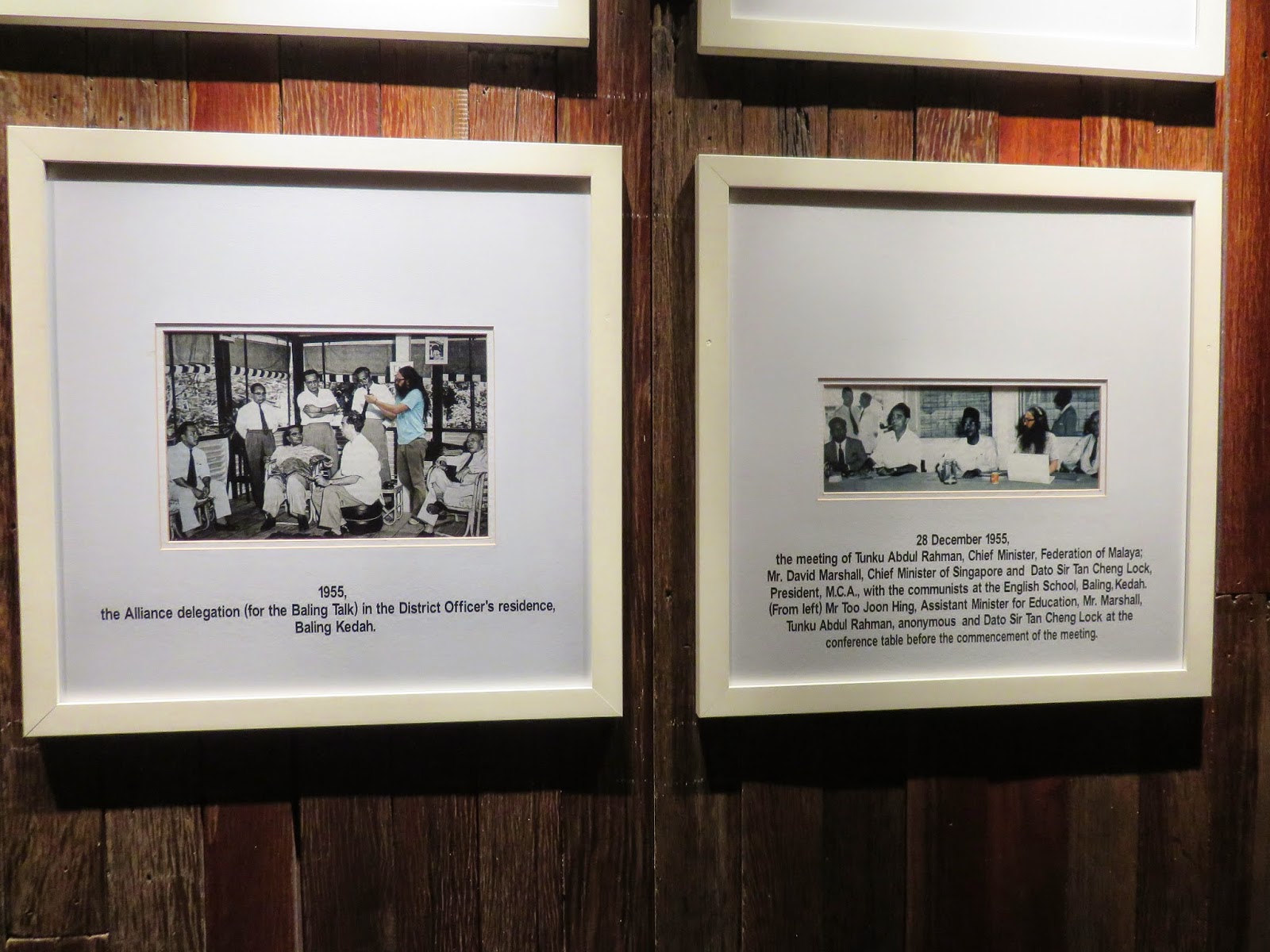In between our Sabah adventure and Nepal trekking, we spent a few days in Kuala Lumpur. We stayed in a hostel I have stayed at before called Rainforest Bed and Breakfast in Bukit Bintang. It is a good location and our room was really quite luxurious. Whilst in KL we spent a fair bit of time relaxing, doing yoga on the balcony, blogging, Skyping and journaling.
On our first night we attempted to use the Internet to locate a top sunset spot for a drink and perhaps dinner. The problem with this turned out to be that although Internet has the potential be a magical up-to-the-minute point of reference, it often is not. Our recommended sunset vantage point had an excellent view of a new high rise that blocked both the city and the setting sun. What was a bit frustrating for us will potentially be devastating for the restaurant’s business. Our over-eager waitress was thrilled that I had picked her favourite cocktail off the menu and once she stopped watching me drink, we had a great time! Afterwards we went down a few floors for a lovely dinner in a large empty hotel restaurant. A highlight was the amusing art created by a man photo shopping himself (in colour) into important events in Malaysian history that were previously captured in black and white. Often he held items not yet invented like a laptop or otherwise out-of-place objects like a doughnut.
 |
| Two of the amusing pieces at our dinner location (G-tower) |
 |
| Dragon kisses during a Chinese New Year celebratory dance |
As with my past trips to KL, we spent some time looking at one
thing Malaysia reportedly does best: mega shopping malls. Our browsing time
spanned as long as we could both hack it, which was probably longer than usual
due to some unique shops, cafes and the upcoming Chinese New Year festive
displays. We caught an impressive dragon dance in one of the malls and spent a
fair chunk of time being hounded by retailers at Low Yat, a constantly hectic
electronics mall. Not especially needing or wanting many things, our main purchases
at most malls were food related! I was especially keen to buy anything wrapped
in a banana leaf (always rewarding food!) and one of my favourite treats, pandan
and coconut agar.
 |
| Jalan Alor on a rainy night |
Our Australia Day dinner took place at Jalan Alor in the rain and was a highlight of our stay. It is a good place to
people watch, grab some street food and is rather pretty come night time. A lot
of the waiters wore comedic umbrella hats and it was one of those places were you
can observe the huge range of tourists. You know, tourists that get amongst it
with newspapers over their heads to protect from the rain compared to those
that drive by in a tinted window car catching glimpses of the outside world,
shielding themselves from any actual experiences. We, of course, like to think
we are in the first category. Mind you, I was not at all keen to try Durian for
a second time and I ran from the smell whenever I caught a whiff of it!
On our final day in KL, Rob’s friend, Sa’adah, kindly
shouted us a delicious lunch in Central KL. Sa’adah had worked in Melbourne for 9
months with Rob and they caught each other up on the happenings of the company.
After lunch we headed to Merdeka Square, the site of Malaysian independence
from the British. (The square was originally built by the British for social
activity and contains a cricket pitch in the centre.) Surrounding the square are
a collection of buildings, each with different architecture from the others.
There is also a display on a Malaysia’s past and present Prime Ministers. We discussed how it
will be interesting to see how the blurbs for the more recent presidents change
over time. I hate to think what a rundown on Australia’s recent PM’s would look
like (and may change again before we know it).
 |
| Rob at the base of the Petronas towers |
 |
| Checking out Malaysia's Prime Ministers |
Later that afternoon we walked to the Petronas towers and the mall within them. There we had a food court dinner and visited the typically freezing cinema for a viewing of Into the Woods. The movie was enjoyable and it was amusing to see what got laughs and what didn't with the local audience.
At night we took in a view of the city that included the Petronas towers from KL Central tower. It was not the clearest of nights but we could see enough to make it worthwhile. In my opinion the tacky souvenirs that you expect to find in such places are really overdone here. I am glad we went up to the top open deck (for an extra fee) because the indoor glass has reflections of the souvenir shops that circle the entire floor, not really the view anyone is after. Unexpectedly, the open deck also has some beautiful murals to enjoy.
 |
| A foggy KL city view |
 |
| Turtle coming at you! |
 |
| Breaking free |



















































